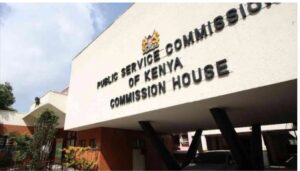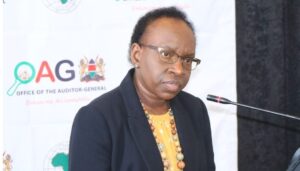Treasury revives LPG subsidy scheme for affordable cooking gas
Affordable cooking gas; the Treasury has announced plans to revive the stalled subsidy scheme from July, promising relief to families hit by record LPG price spikes.
Treasury Cabinet Secretary Ukur Yatani has listed the cooking gas distribution scheme as a priority public investment under infrastructure development in the next financial year starting July.
The cooking gas subsidy scheme initiated by the Ministry of Energy during the 2016/2017 financial year was aimed at cutting reliance on environment-unfriendly kerosene and charcoal.
Its implementation was hampered by some suppliers providing faulty cylinders and distribution challenges at the State-owned National Oil Corporation (Nock), which was to drive the programme.
The draft Budget Policy Statement for the year starting July now shows that the Treasury expects to fund the supply of at least 300,000 cylinders.
“Over the next three fiscal years, the government will strengthen…distribution of 300,000, six-kilogramme liquefied petroleum gas (LPG) cylinders to low-income households,” Mr Yatani says in Budget Policy Statement.
Affordable cooking gas
Currently, the 13-kilogramme cooking gas retails at Sh3,400 from Sh2,250 in June before the government imposed the 16 percent tax at the start of the current financial year, pushing the commodity out of reach for most households.
The six-kilogramme cooking gas is retailing at Sh1,600 from Sh900 in June.
Under the initial subsidy scheme, the beneficiaries were to pay a discounted price of Sh2,000 in three years for the burner and cylinder, with refills pegged at Sh840 at the time.
The Treasury did not disclose the extent of the subsidy in the revived plan.
Nock piloted the project from October 2016 in Machakos and Kajiado counties but it later ran into difficulties after the State audit office found that some Sh870 million had been spent with no value to taxpayers.
It also emerged that fraudulent contractors supplied 67,251 faulty gas cylinders, out of more than 200,000 that were delivered.
The audit showed that 10 firms had been contracted by the Ministry of Energy in May 2017 to supply various components of the LPG gas project at an aggregate cost of Sh1 billion.
LPG has become the preferred energy source for households that can afford it in major towns due to its convenience and because it is cleaner than other cooking fuel.
Official data from the 2019 census shows that 53 percent of households urban centres rely on LPG for cooking compared to 5.6 percent of those in rural areas. Fuel prices, including that of LPG, have hit a record high in many countries, tightening the squeeze on consumers.
Also read,
Ukraine president Zelensky escapes assassination attempt again from Russian spy squads
Follow us







